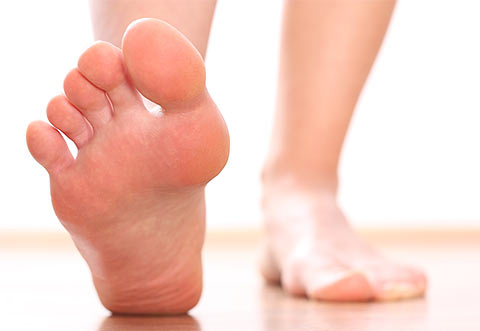Definition of Hyperhidrosis

In some people, the body’s mechanism for cooling itself is overactive — so overactive that they may sweat four or five times more than is necessary, or normal. When sweating is this extreme it can be embarrassing, uncomfortable, anxiety-inducing, and disabling. It can disrupt all aspects of a person’s life, from career choices and recreational activities to relationships, emotional well-being, and self-image.
This kind of excessive sweating is a serious medical condition. It’s called hyperhidrosis and it afflicts millions of people around the world (approximately 3% of the population) but because of lack of awareness, more than half of these people are never diagnosed or treated for their symptoms.
It doesn’t have to be this way.
Dr. Howard Green is dedicated to improving understanding of this condition and helping sufferers get relief. If you or someone you care about suffers from hyperhidrosis, you should know that treatments are available. We’ve got information to help you understand hyperhidrosis and we can help you find the treatment you need to live the life you deserve.
Treatment Overview
If you suffer from excessive sweating, you may feel like you’ve tried everything. You may have lost hope. Even if you feel this way, please take some time to read through the information on these pages about all the current treatments available for treating hyperhidrosis. We think the things you learn will ignite your optimism.

Some traditional treatments, like antiperspirants and iontophoresis have been improved and we now know how to make them more effective. New treatments, like Botox injections, have started giving relief to those who never thought they’d find it. Physicians and their patients are also experimenting with combinations of treatments and getting good results.
Due to side effects, oral medications are not recommended as a long-term solution. Similarly, surgical options, although heavily advertised, are reserved for only certain severe cases of hyperhidrosis that have not responded to any of the other treatment options. Before considering surgical treatment, physicians and their patients must fully consider and discuss the very real risks of permanent damage and severe side effects.
In 2004, for the first time in decades, the U.S. Food & Drug Administration (FDA) approved a new treatment for excessive sweating of the underarms (axillary hyperhidrosis). Specifically, on Monday, July 19, 2004, the FDA approved BOTOX (botulinum toxin type A) for the treatment of severe primary axillary hyperhidrosis in patients unable to obtain relief using antiperspirants. BOTOX is produced by Allergan, Inc., of Irvine, California, and it is the most studied brand of botulinum toxin in the world. BOTOX has been available for over a decade and has been used to treat more than 1 million patients with various conditions, including spasticity and movement disorders. With FDA approval, the United States joins more than 20 other countries that have already approved the use of BOTOX for excessive sweating.
Using local injections of botulinum toxin to alleviate the symptoms of hyperhidrosis is a promising approach. Research has shown that treating the armpits, hands, feet, and face with botulinum toxin is safe and effective. In one clinical study involving 322 patients with severe underarm sweating, 81% of the patients receiving botulinum toxin injections achieved a greater than 50% reduction in sweating. And, 50% of the patients had their excessive sweating relieved for at least 201 days (nearly 7 months).
Botulinum toxin is a natural, purified protein with the ability to temporarily block the secretion of the chemical in the nervous system that is responsible for “turning on” the body’s sweat glands. By blocking, or interrupting, this chemical messenger, botulinum toxin “turns off” sweating at the area where it has been injected.
Using botulinum toxin Type A injections effectively.

The use of botulinum toxin for the treatment of hyperhidrosis is most effective when performed by a physician, like Dr. Green, who has received special training and who has experience with the procedure. To find a physician in your area who is familiar with hyperhidrosis treatments, use the “Physician Finder” at www.sweathelp.org. Physicians who have attended an International Hyperhidrosis Society educational event (which includes information and training on using botulinum toxin to treat hyperhidrosis) are highlighted.
Botulinum toxin injections can be administered in a physician’s office, require relatively little time, and do not demand any restrictions in work or leisure activity (aside from refraining from intensive exercise or the use of a sauna on the day of the injections).
During the procedure, a very fine needle is used to inject small amounts of botulinum toxin just under the skin near the sweat glands responsible for excessive perspiration. Multiple injections are given based on your doctor’s assessment of the area that needs to be treated. Injections into the palms or soles may be temporarily uncomfortable. To ease discomfort, physicians may use one or more of a number of anesthetic techniques such as pain-killing creams, nerve blocks, ice, or vibrations.
There is a possibility that during the procedures some sweat glands may be missed. As a result, you may continue to experience some sweating from the untreated areas. If this happens, it’s important to talk to your doctor so that he or she can re-evaluate the sweating areas and perhaps “fill in” the gaps with additional injections.
It is important to note that Botulinum toxin injections do not cure hyperhidrosis; your symptoms will return gradually. Follow-up injections are required to maintain dryness. These repeat injections may be necessary at intervals varying from seven to sixteen months.
For more information on the use of Botox injections to treat hyperhidrosis of the feet, please feel free to ask Dr. Green, or visit www.sweathelp.org.